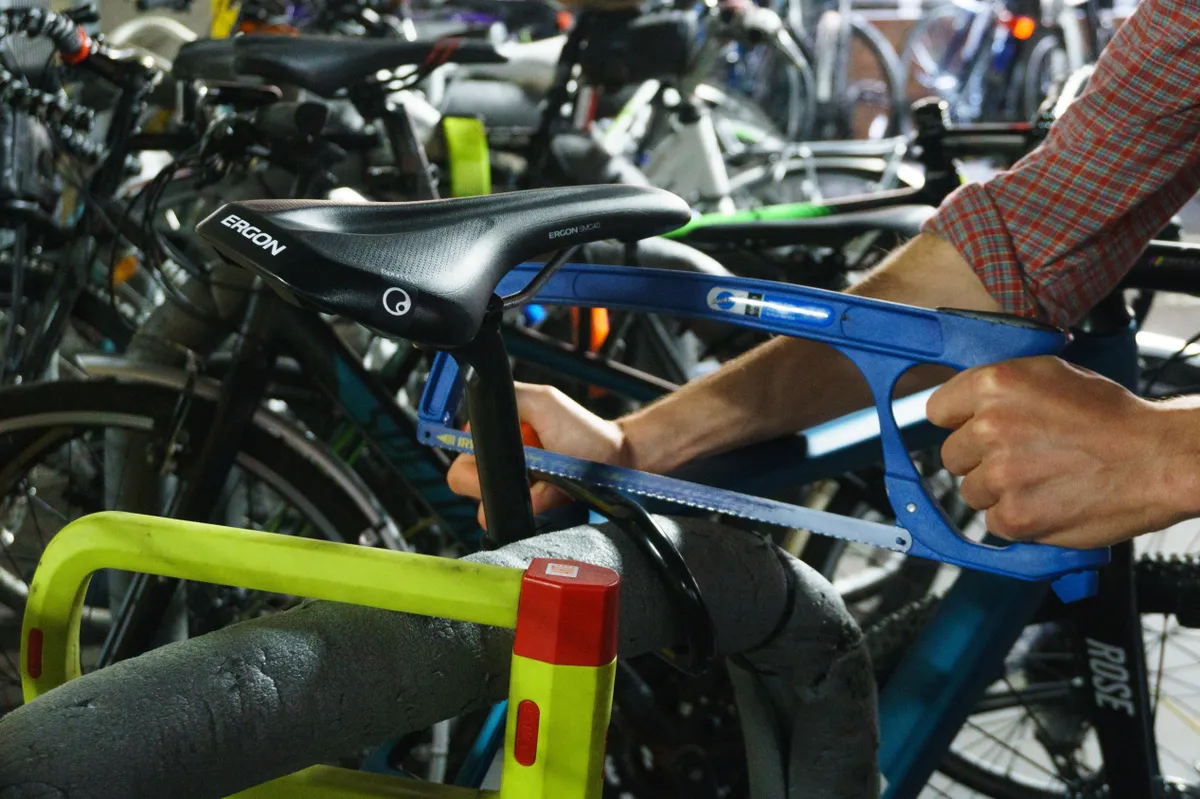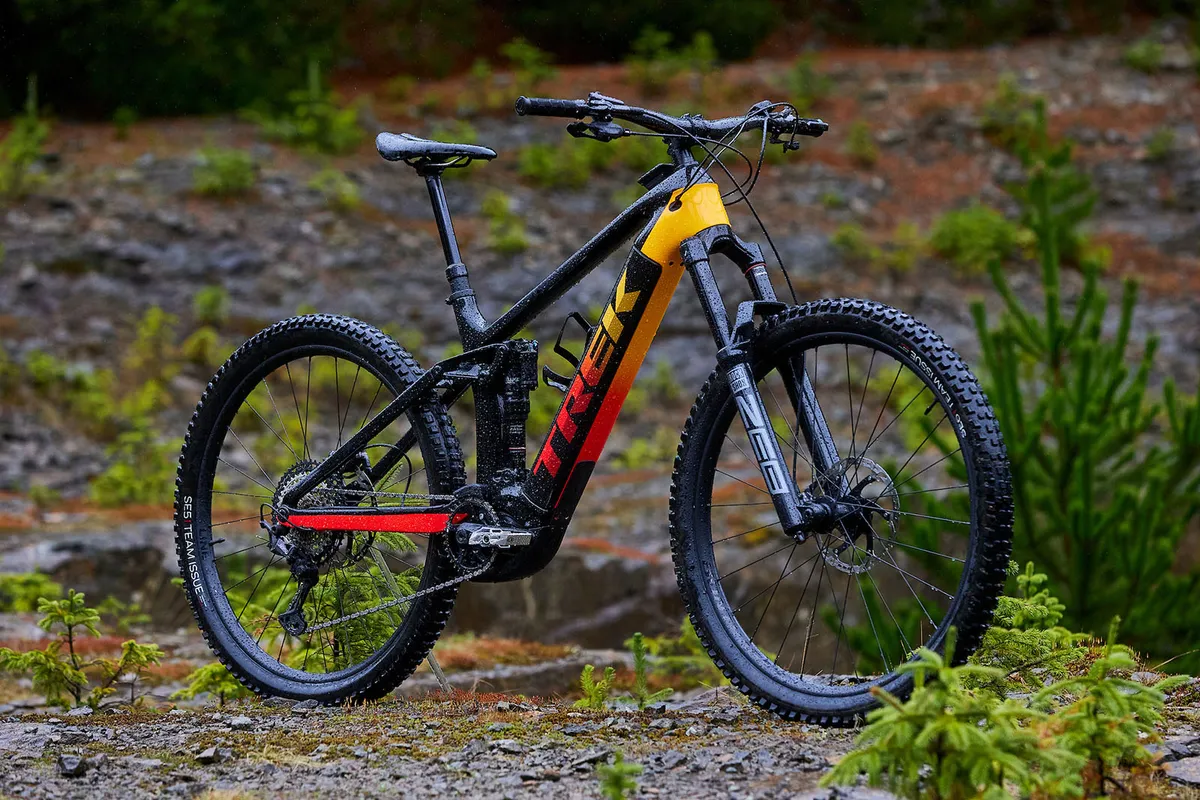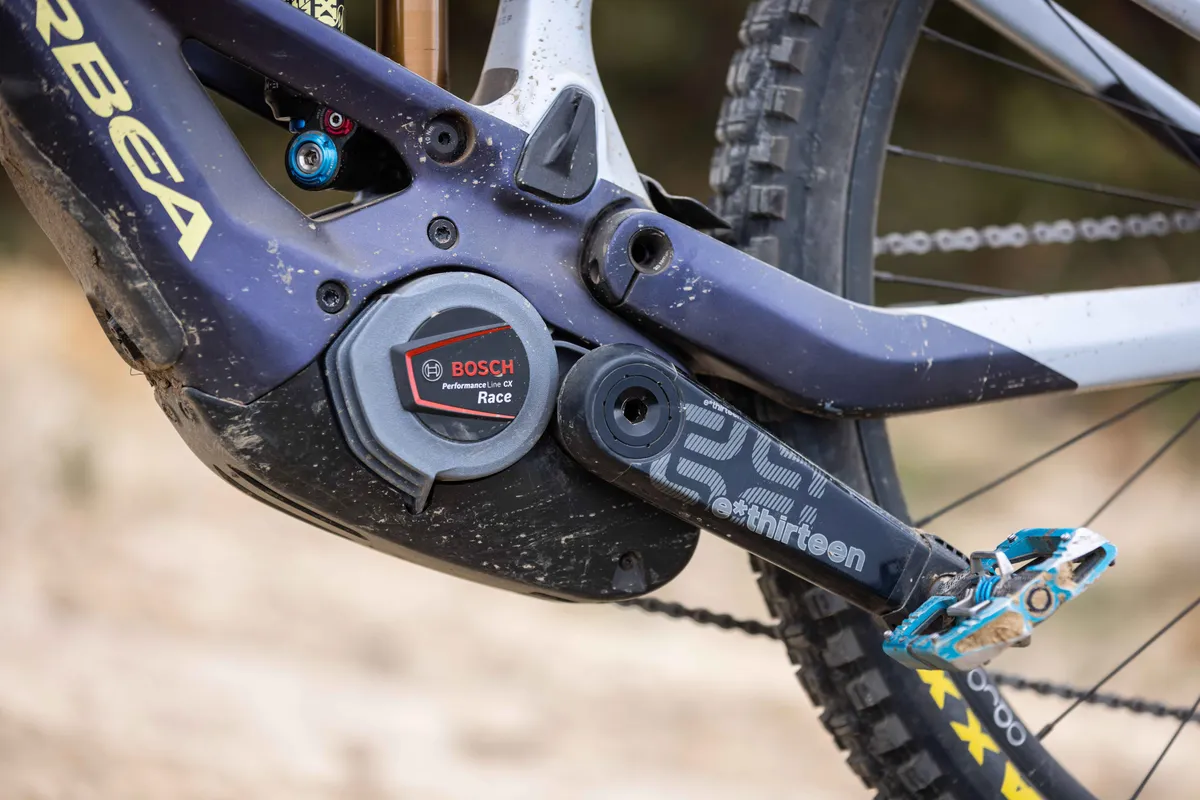So you want to buy an ebike, but you’re wondering if you can save some money by buying used. Well, the good news is the number of second-hand electric bikes available for sale is increasing all the time.
The bad news is buying a used ebike has all the pitfalls of buying a regular second-hand bike, with the added complications of an electrical drive and control system. So, there is plenty to think about.
We’re going to focus on electric bikes here, but if you're looking for a used non-assisted bike, we also have a comprehensive guide on how to buy a second-hand bike.
What specific equipment do ebikes have?

Whether you're looking to buy a used electric road bike, electric gravel bike, an eMTB or an electric commuter bike, you'll find some common components that will need particular attention.
- A motor or drive unit, which provides assistance when you’re pedalling.
- A battery, which is a rechargeable unit mounted on the bike, supplying power to the motor (and sometimes lights and electric gears).
- Controls that operate the drive unit, usually mounted on the handlebar or the top tube.
What to look out for when buying a used ebike

We spoke to BikePark Wales’ workshop manager Mark Wooler, who is trained in the art of ebike repair, among his many other qualifications.
“We have numerous requests for ebike work,” explains Wooler. “Buying a second-hand ebike can be a tricky ordeal. Thankfully, the majority of deals are from genuine people with a good bike, but some can be exactly the opposite.”
It’s important to test ride a bike before you buy, but sometimes that’s not possible, as Mark explains: “I saw a customer who had bought a bike which he understood needed work, which he thought he was capable of carrying out – the gears did not work and both the chain and mech were damaged, so he could not test ride the bike."
The customer thought he knew the extent of the work required, but there was bad news in store.

"Once home and after ordering parts online and replacing the drivetrain, he tried to ride the bike, but there was a horrendous crunching sound when turning the cranks," says Wooler.
It became clear that the drive unit internals had failed and the chainring would not rotate. Further expense spent on diagnostics showed numerous errors with the drive unit, meaning a service centre repair was not possible. The customer ended up with a costly bill.
"A new full-price drive unit was the only way to get this working," Wooler recalls. "So this was a very expensive solution, meaning the deal was indeed too good to be true, unfortunately.”
Stolen goods

One of the risks of buying a second-hand bike is it could be stolen.
Wooler says of one such experience: “The seller claimed he had bought an ebike online, which was too small for him and had been left too long to return it, so he needed to sell it to fund a better bike in the correct size.
"An initial price had been agreed and upon meeting the seller at a mutually agreed location, they claimed to have forgotten the charger and keys, but said they would knock money off their agreed price to make the sale. A lower price was agreed and the buyer had the bike.”
Unfortunately, it turned out to be a stolen bike. Wooler reflects: “Arriving at the workshop and asking for the lock to be drilled and a new lock fitted when not in possession of the original receipt is a red flag for any workshop.”
Degraded batteries

Issues with ebike batteries can hamper performance and be expensive to resolve.
“A sale occurred where the bike and battery were around five years old," Wooler explains.
"The bike worked, but battery range was certainly limited from a full charge. We have the ability to carry out capacity testing on batteries, with this one giving 62% capacity at a charge of 100%.
"If the original owner had experienced range issues within the available warranty period of two years from purchase date, this could have been addressed via the correct warranty procedure.”
Capacity issues are thankfully rare on good-quality batteries from major brands.
“New batteries are expensive, and this bike required one, an expense the new owner could certainly have done without,” warns Wooler.

“Thankfully, there are more times when a sale has been amazing for the person buying,” Wooler says. “We can provide different levels of service to eMTB owners, from a check over to a full system diagnostic test and for Bosch customers, a full battery capacity test carried out with all reports either emailed or printed for the customer.”
Buying from a dealer

To give customers confidence when buying from BikePark Wales’ ex-hire range, Wooler ensures all bikes are put through a full strip-down and service, where they check everything (including suspension) and replace the bearings.
Electric cables are routinely replaced and the batteries are fully tested. Once sold, the customer receives a full system diagnostic report and a battery capacity test report – along with the keys and charger.
A history of the bike is available, should the customer want it. Logs show how much use the bike has had, how many services and which parts were used to prepare the bike for sale.
If any issues are experienced with any bike BikePark Wales sells, Wooler is only a phone call or email away.
“I can gauge an issue and provide either advice or book time to get the bike in," he says. "We could not be more transparent when selling any bike, we just hope this gives the confidence people need to know they are getting a good bike from us.”
9 top tips when buying a pre-owned ebike
- Ask to see the original receipt or at least take steps to ensure it is a legitimate sale.
- Ensure the key works to remove and (if necessary) refit the battery. If an Allen or Torx key is required, check this works, but be careful because some lock assemblies can be fragile.
- Once the battery is out, take time to check it over. Any dents to the casing or cracks, signs of thermal deformation or LED indications in certain patterns unique to the brand you have in front of you need to be treated with caution.
- Make sure the charger plug is right for the battery socket. Check for signs of corrosion in the terminals of the battery and on the terminals of the bike. A torch or phone light should suffice to check.
- Test ride the bike, go through the gears and all assistance modes, listening for anything out of place. If an issue is present within the electrical system, in most cases assistance will be removed in all modes. When riding, you'll be able to tell by how hard it is to pedal and/or visually by LED indication on the controller.
- If the bike is supported with an app, use this to connect to the bike. Take some time to go through the app, because it will provide lots of useful information to indicate issues or errors. Most can be rectified, but you will want to know about them before purchasing.
- There are also numerous ebike social media groups, which can provide good advice and are worth checking out. Often, these groups have members who work within the bike industry and can give advice. However, because these groups are not 'policed' for their technical advice, some input can be spurious.
- If it’s an honest sale, there shouldn’t be any issue with asking questions or checking the bike over before buying. If the seller is hesitant, it could be a sign that they’re trying to hide something.
- Don’t buy an ebike that has been ‘chipped’ or ‘tuned’ away from the manufacturer’s settings. This can void the warranty and certainly puts extra strain on the components.
Should you get your used ebike checked over after buying it?

It can be wise to get the ebike you want to buy checked over by a bike shop.
Many modern bike shops will offer a range of services to help you ensure everything is in order with the bike you've bought.
BikePark Wales, for example, can carry out the following checks:
- Diagnostic test and report (any brand): £30
- Battery capacity test (Bosch): £30
- ebike checkover including diagnostic report, battery capacity test report (Bosch only): £50
The ebike checkover is intended specifically for someone who has bought a second-hand ebike and wants to have it checked out.
What if it still goes wrong?

Like any electrical goods, it’s always possible that your freshly purchased ebike will suddenly give up the ghost. If you hand over your cash and then it breaks, what are your options?
Most brands have policies in place when it comes to warranties and changes of ownership. Bosch, for example, only offers warranties to the original purchaser, so these are non-transferrable following the sale of a bike.
BikePark Wales charges £120 labour to fit a customer-supplied motor on a Bosch, Shimano, or TQ-equipped ebike.
As another example, eBike motor centre explains in its FAQ that motor repairs and rebuilds can range from a bargain £60 up to a whopping £350, depending on the brand and what needs replacing.
Replacement batteries can cost from £300 up to £1,000, so having battery diagnostics performed before purchasing an ebike could be money well spent.





